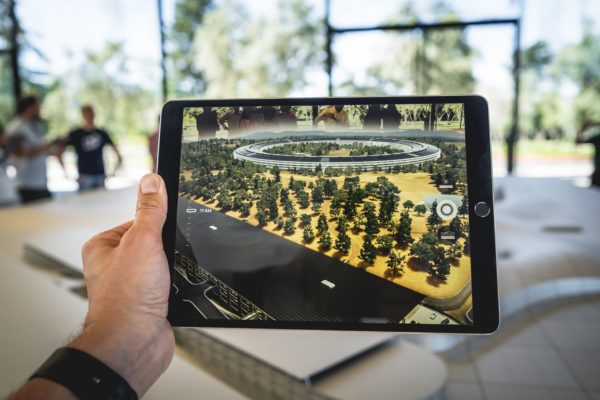IISRI researchers are helping to measure the brain’s response to stimuli, with huge potential for breakthrough research – in areas ranging from mental health to artificial intelligence.
The idea of using a mosquito brain to control aircraft or robots might sound like complete science fiction, but it is one potential application of research being undertaken by a team within Deakin University’s Institute for Intelligent Systems Research and Innovation (IISRI).
The team are helping to answer some of the fundamental questions in neuroscience – how neural circuits form in the brain and how brain cells respond to stimuli, such as drugs and alcohol, or viruses.
Understanding such behaviours is likely to play a significant role in developing treatments for degenerative diseases like dementia and Alzheimer’s disease, or mental disorders, as well as vaccines for neurotropic viruses like Dengue fever and Zika – and could well have far-reaching effects on the development of artificial intelligence.
In collaboration with Deakin’s IMPACT Strategic Research Centre, CSIRO’s Australian Animal Health Laboratory (AAHL) and Mayo Clinic (USA), the researchers have developed a unique technique to analyse and classify extra-cellular brain data, with very high accuracy.
Over the past few years, microelectrode array technology has enabled scientists to grow brain cells on microchips. As the cells grow, they form circuits, enabling researchers to study the neurons and their connectivity.
The IISRI research team has developed a sophisticated algorithm that measures the live stream of active, living neurons on the chip. Their algorithm uses noise-modelled “wavelets” to sort the activity of hundreds of overlapping electrical impulses (spikes), through a process called selective sorting. The technique can be used to measure any electrically-stimulated cell, including heart, brain or muscle cells.
In the field of artificial intelligence, this research could provide insights for improving the control of machines or robots.
“The number of neuron cells in a mosquito brain is in the range of tens to hundreds of thousands, far less than mammals,” said IISRI research leader, Dr Asim Bhatti.
[testimonial_text]In the not-too-distant future, we should be able to put a whole mosquito brain on a chip. The insights about how the mosquito brain controls the insect’s flying behaviour, employing real-time information from sensors, such as eyes and antennae, could one day allow us to control aircraft, robots and other machines autonomously using ‘real’ intelligence rather than artificial.[/testimonial_text]
[testimonial_picture name=”Dr Asim Bhatti” details=”IISRI Research Leader”]
 [/testimonial_picture]
[/testimonial_picture]The research has been published in “Nature Scientific Reports,” in a paper entitled “Unified selective sorting approach to analyse multi-electrode extracellular data.”
Dr Bhatti is a Senior Research Fellow in Modelling, Simulation and Haptics at IISRI. Since completing his PhD in electronic engineering at Deakin in 2006, he has established the field of neuro-engineering at Deakin, with IISRI Director Alfred Deakin Professor Saeid Nahavandi, and their team is undertaking pioneering work, particularly in relation to building understanding of how viruses effect the brain.
Dr Bhatti works in several multi-disciplinary teams involving neuroscience, biology, materials and engineering, both within Deakin and with world-leading external partners such as AAHL, the Mayo Clinic, the Florey Institute and Georgia Institute of Technology, where he completed an Endeavour Fellowship in 2011.
He explained that scientists are able to grow 25,000-30,000 rat brain cells on the chip at one time, whereas the chip consists of 60 microelectrodes, giving rise to the communication paradigm known as “N sources and one sink” (similar to a mobile phone tower collecting signals from across a region).
The IISRI team has been focussing their energies on developing algorithms to decipher useful information about the state of the brain, embedded in the neural activity.
“The algorithm has allowed us to clean up the data on the chip,” Dr Bhatti said. “The electrode within the chip is only able to measure around 60 electrical signals at any one time, but at any moment hundreds of overlapping signals are being generated by the brain cells.
“Our software allows us to unscramble these spikes and achieve a clear signal, giving us a much better understanding of what is going on.
“The Neuron cells on the chip produce activity within the range of 20-50 microvolts. The electrodes on the chip are highly sensitive and amplify the signals around 1200 times.
“Because we can observe the functional behaviour of the brain in response to stimuli, we can observe healthy brain cells before and after a drug, stimulant or virus/bacterial infection. We are working with AAAHL to map the effect of viruses like Zika and Dengue on the brain, as a major step towards understanding the impact of viruses on the brain and potential development of effective vaccines and therapies.”
Read “Unified selective sorting approach to analyse multi-electrode extracellular data,” “Nature Scientific Reports.”
Published by Deakin Research 6 July 2017.



